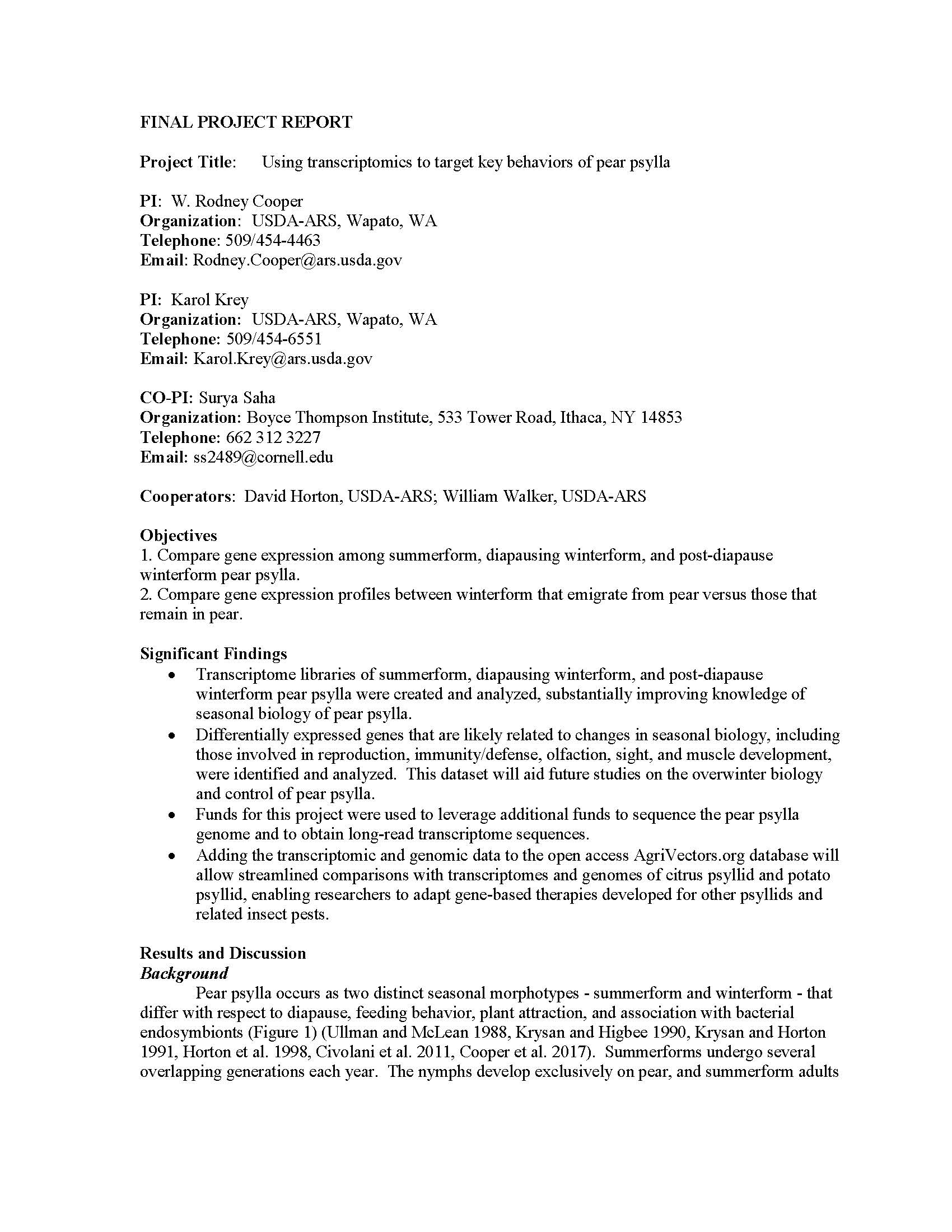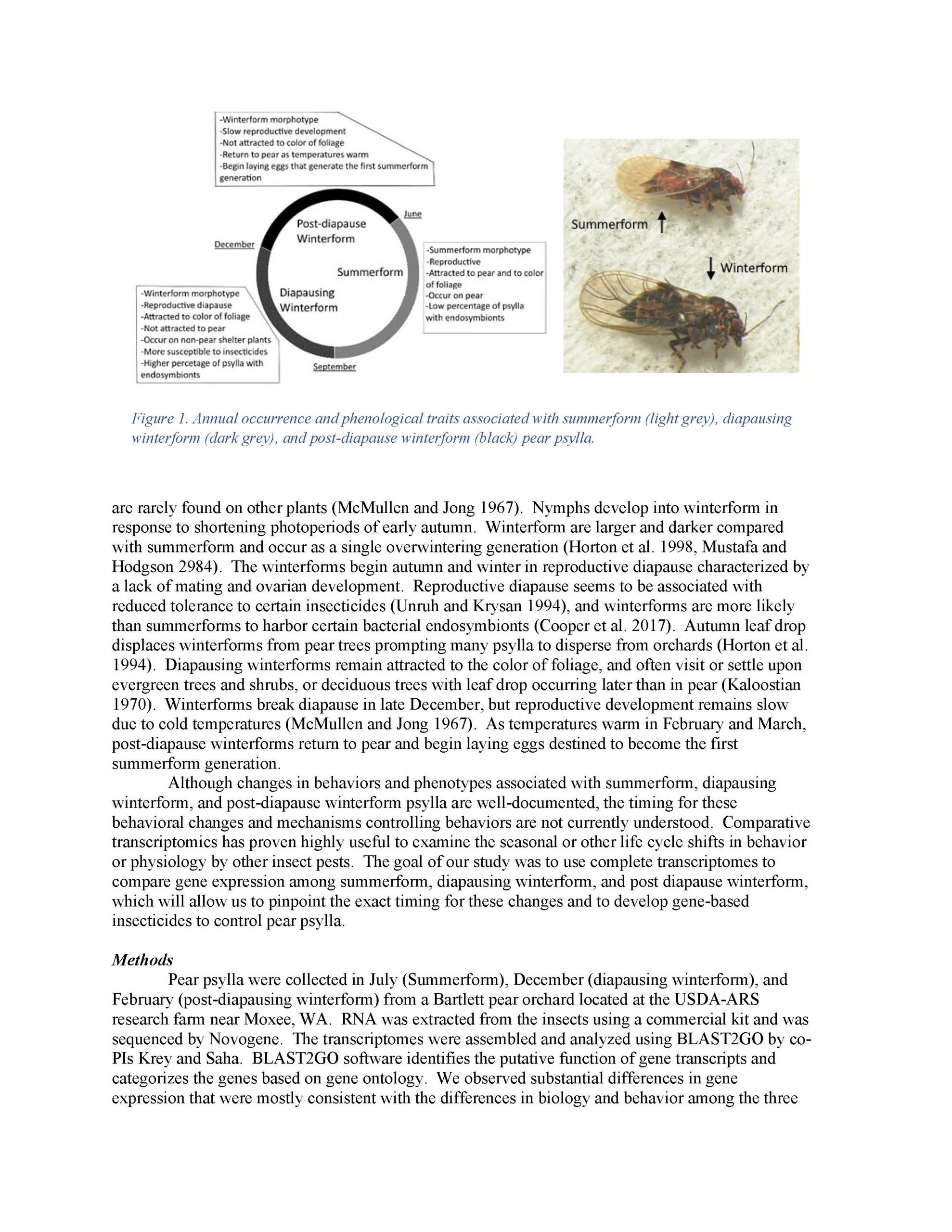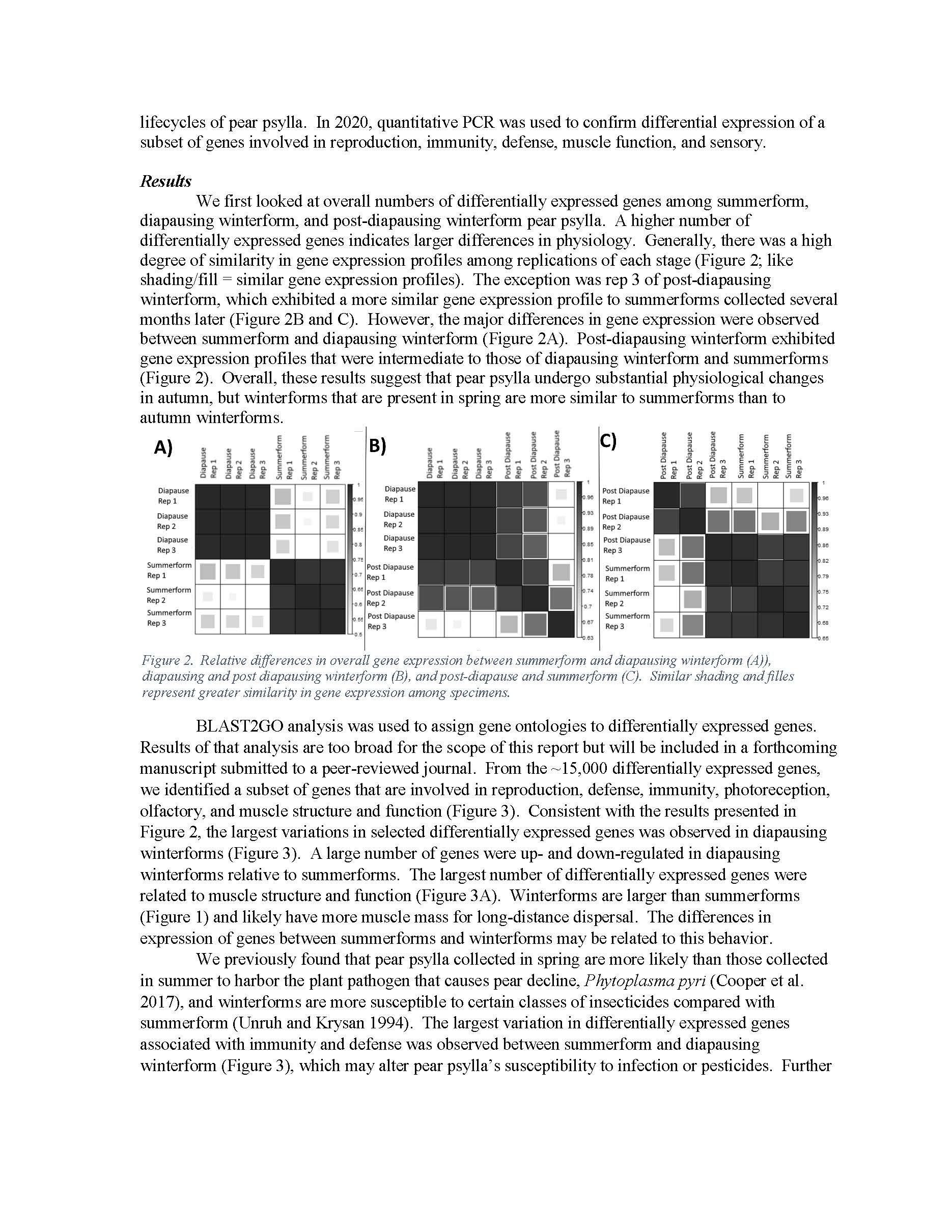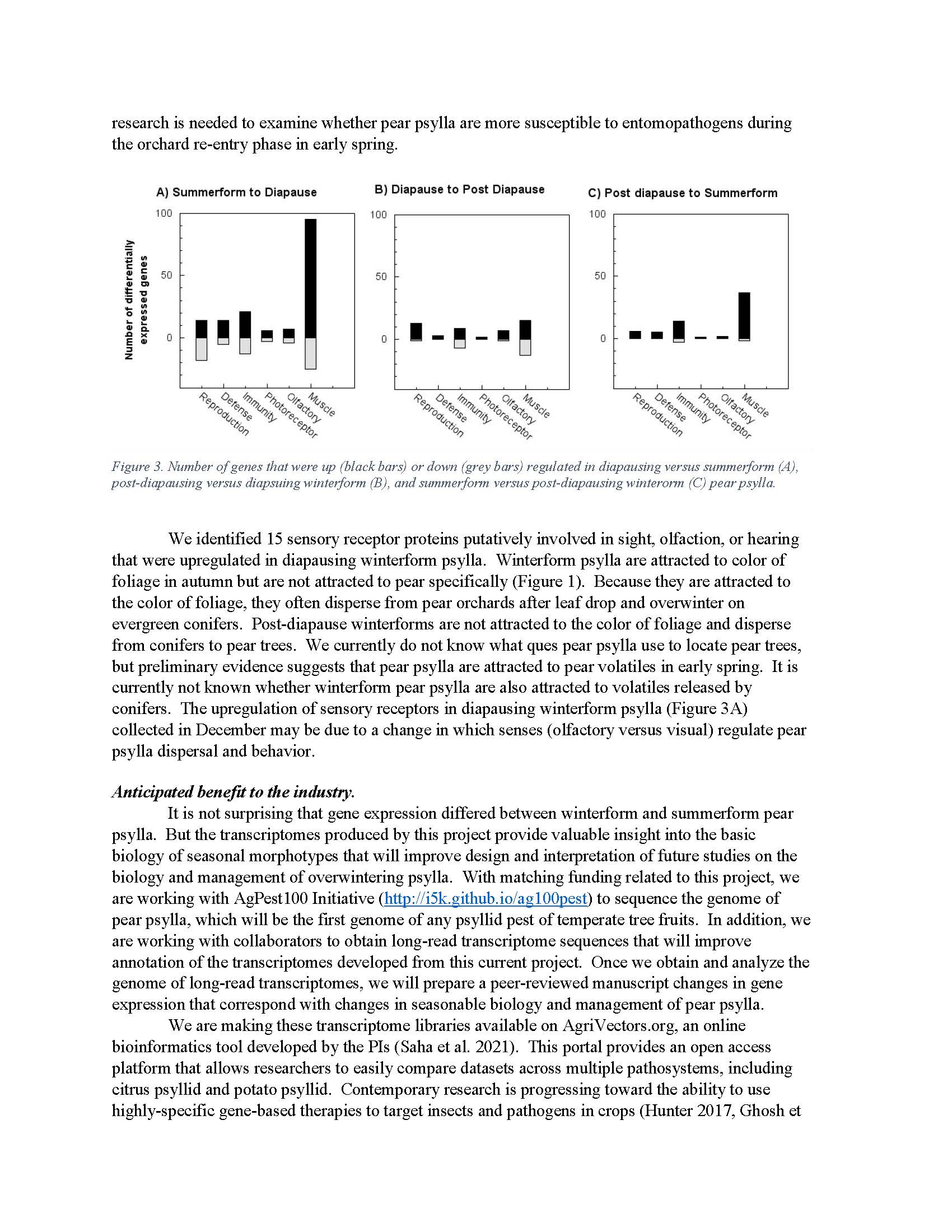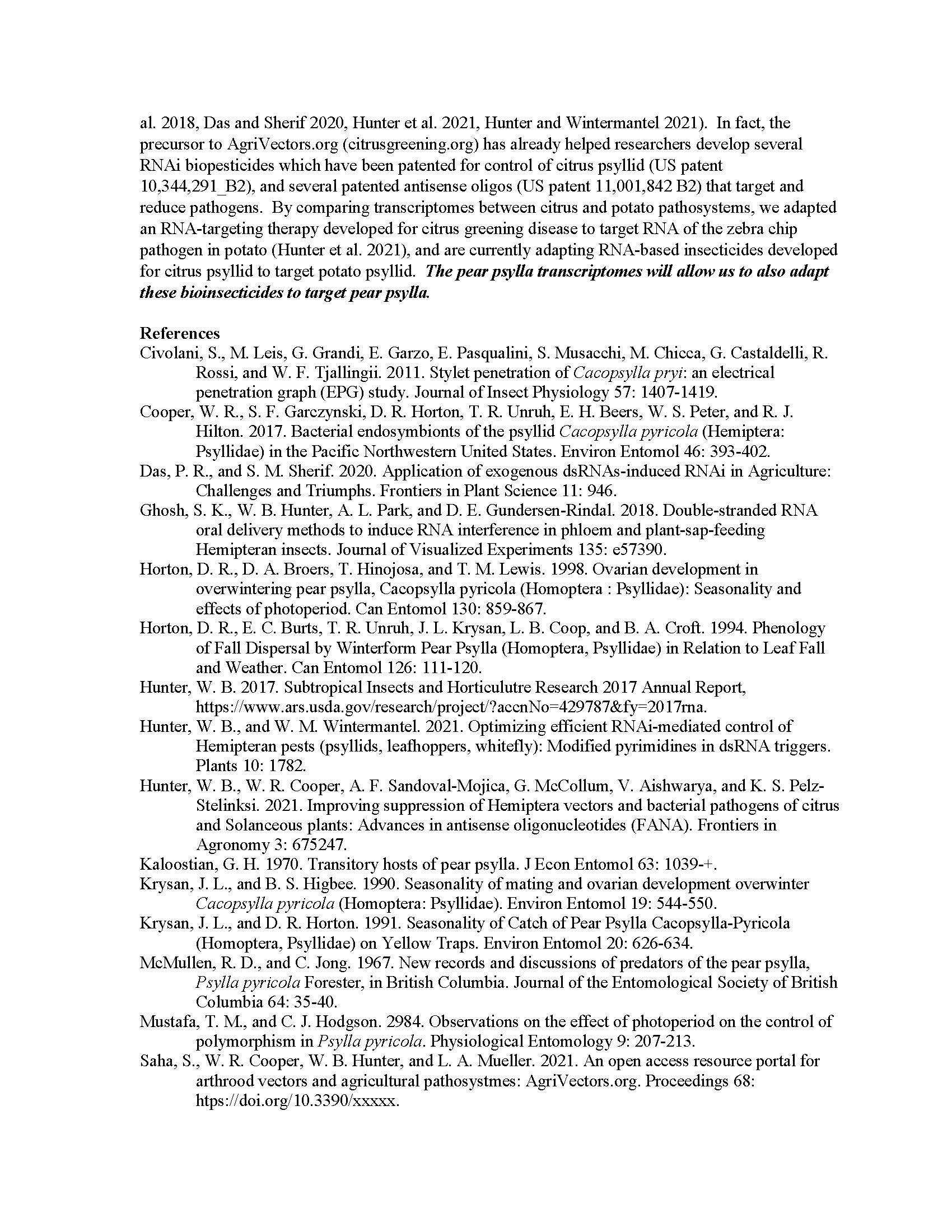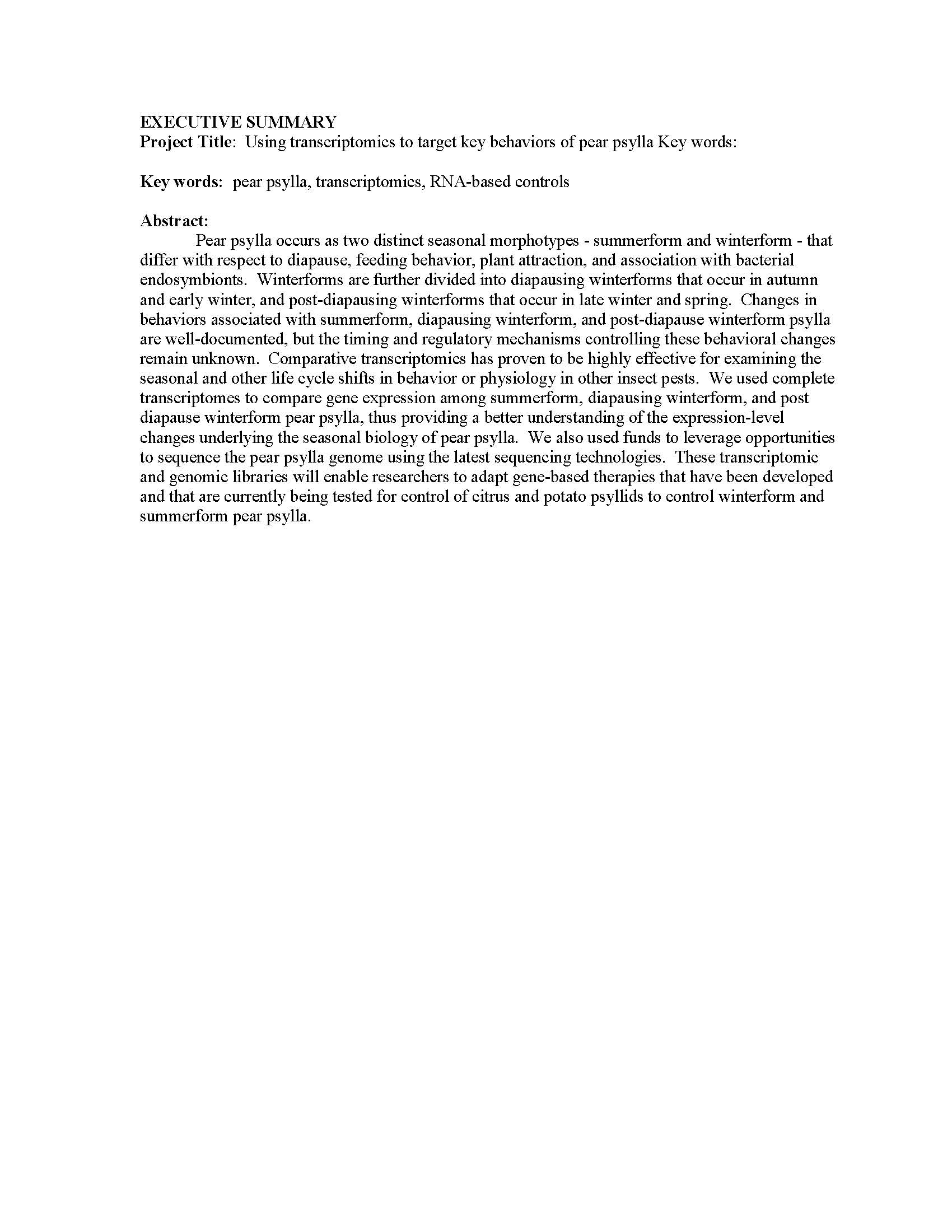Using transcriptomics to target key behaviors of pear psylla
Author: W. Rodney Cooper
Published: 2022
Summary: Pear psylla occurs as two distinct seasonal morphotypes - summerform and winterform - that differ with respect to diapause, feeding behavior, plant attraction, and association with bacterial endosymbionts. Winterforms are further divided into diapausing winterforms that occur in autumn and early winter, and post-diapausing winterforms that occur in late winter and spring. Changes in behaviors associated with summerform, diapausing winterform, and post-diapause winterform psylla are well-documented, but the timing and regulatory mechanisms controlling these behavioral changes remain unknown. Comparative transcriptomics has proven to be highly effective for examining the seasonal and other life cycle shifts in behavior or physiology in other insect pests. We used complete transcriptomes to compare gene expression among summerform, diapausing winterform, and post diapause winterform pear psylla, thus providing a better understanding of the expression-level changes underlying the seasonal biology of pear psylla. We also used funds to leverage opportunities to sequence the pear psylla genome using the latest sequencing technologies. These transcriptomic and genomic libraries will enable researchers to adapt gene-based therapies that have been developed and that are currently being tested for control of citrus and potato psyllids to control winterform and summerform pear psylla.
Keywords:

